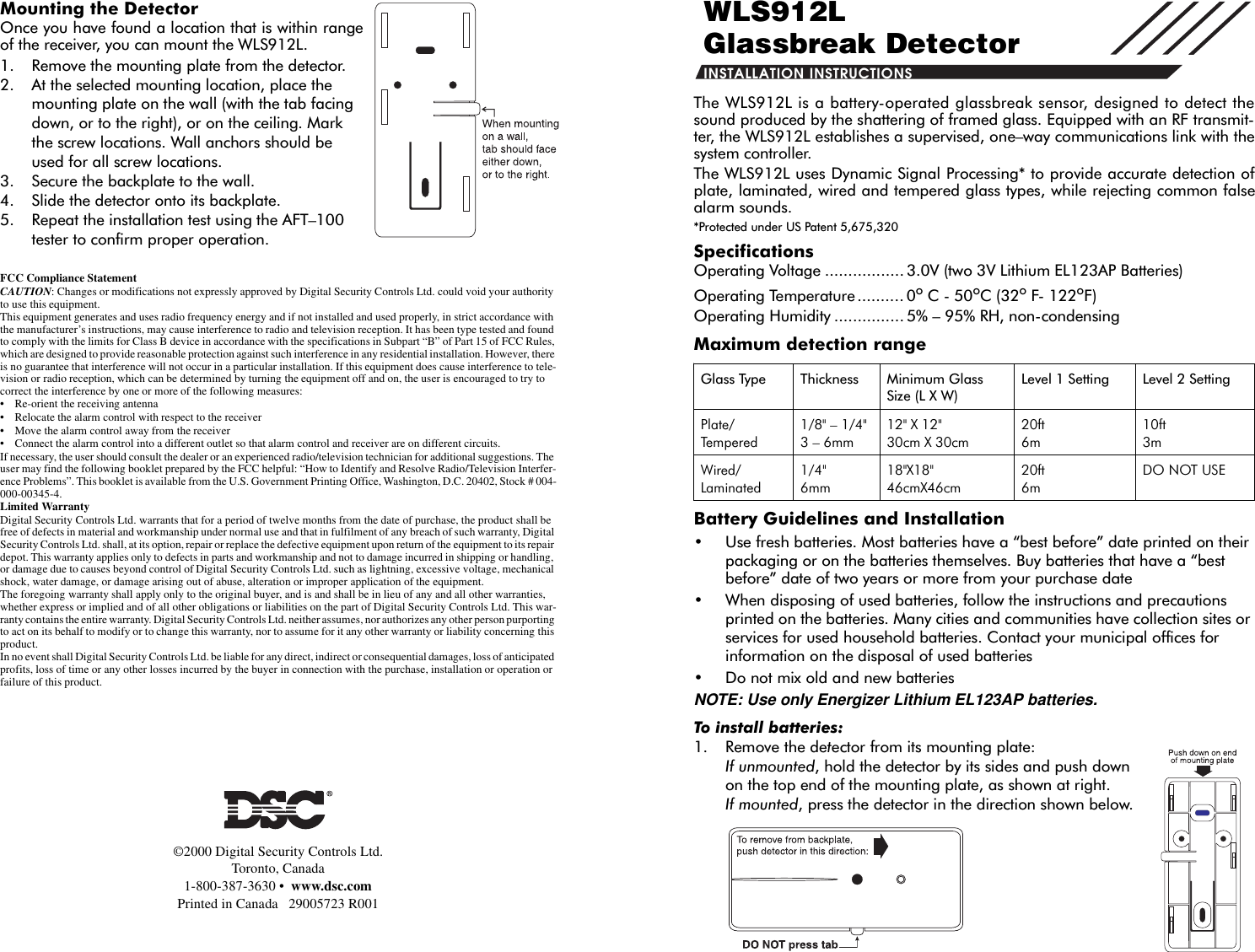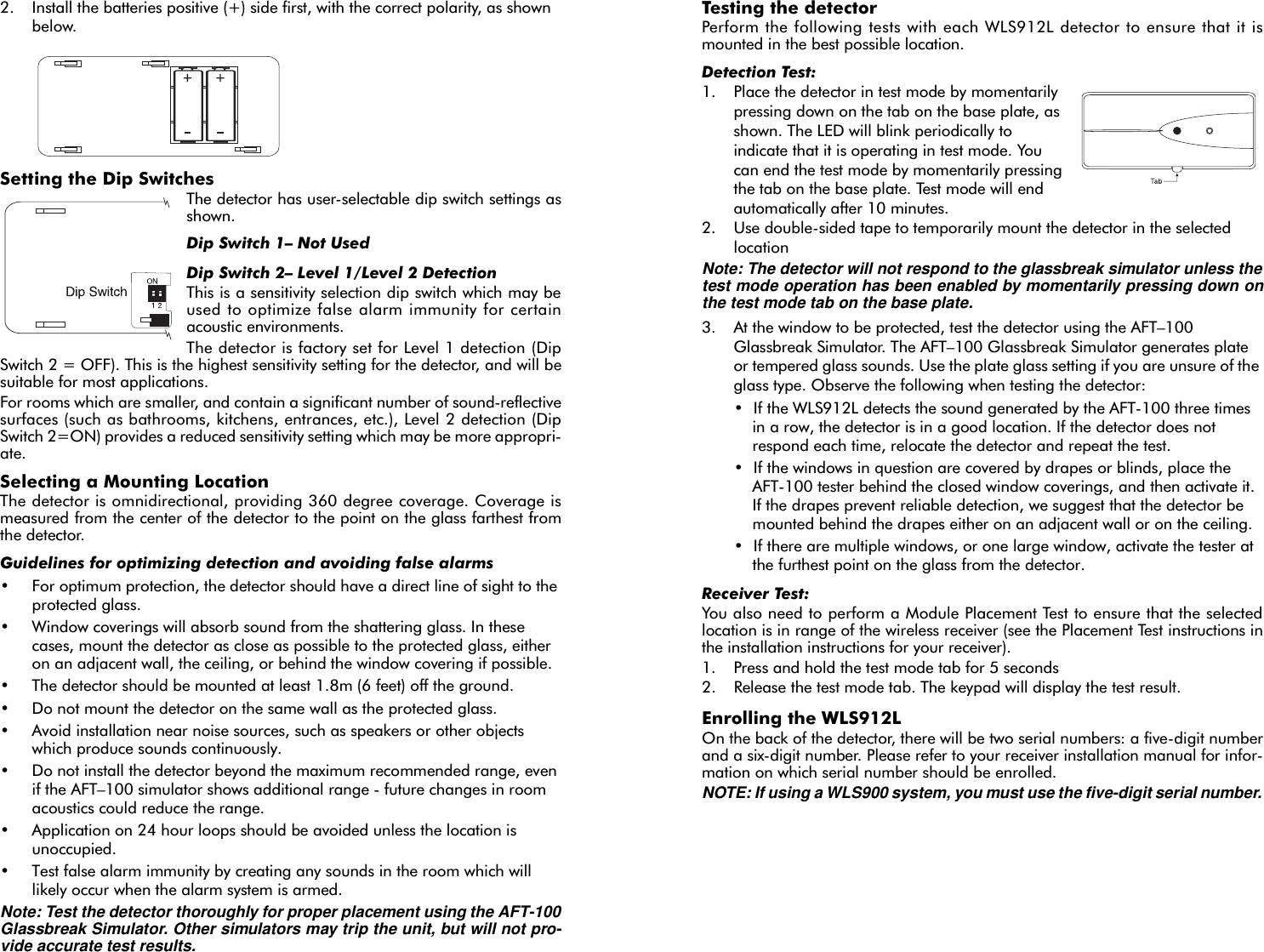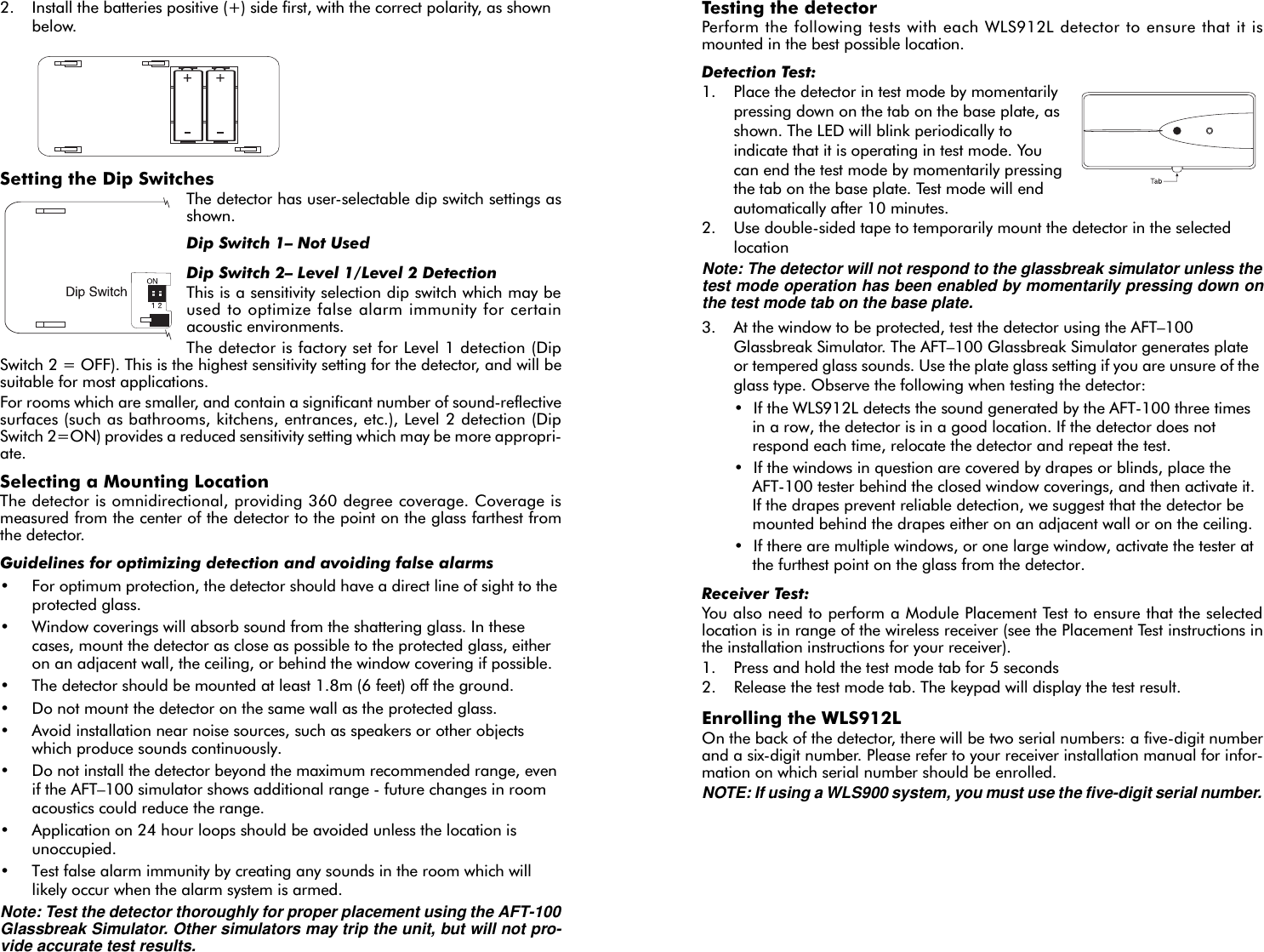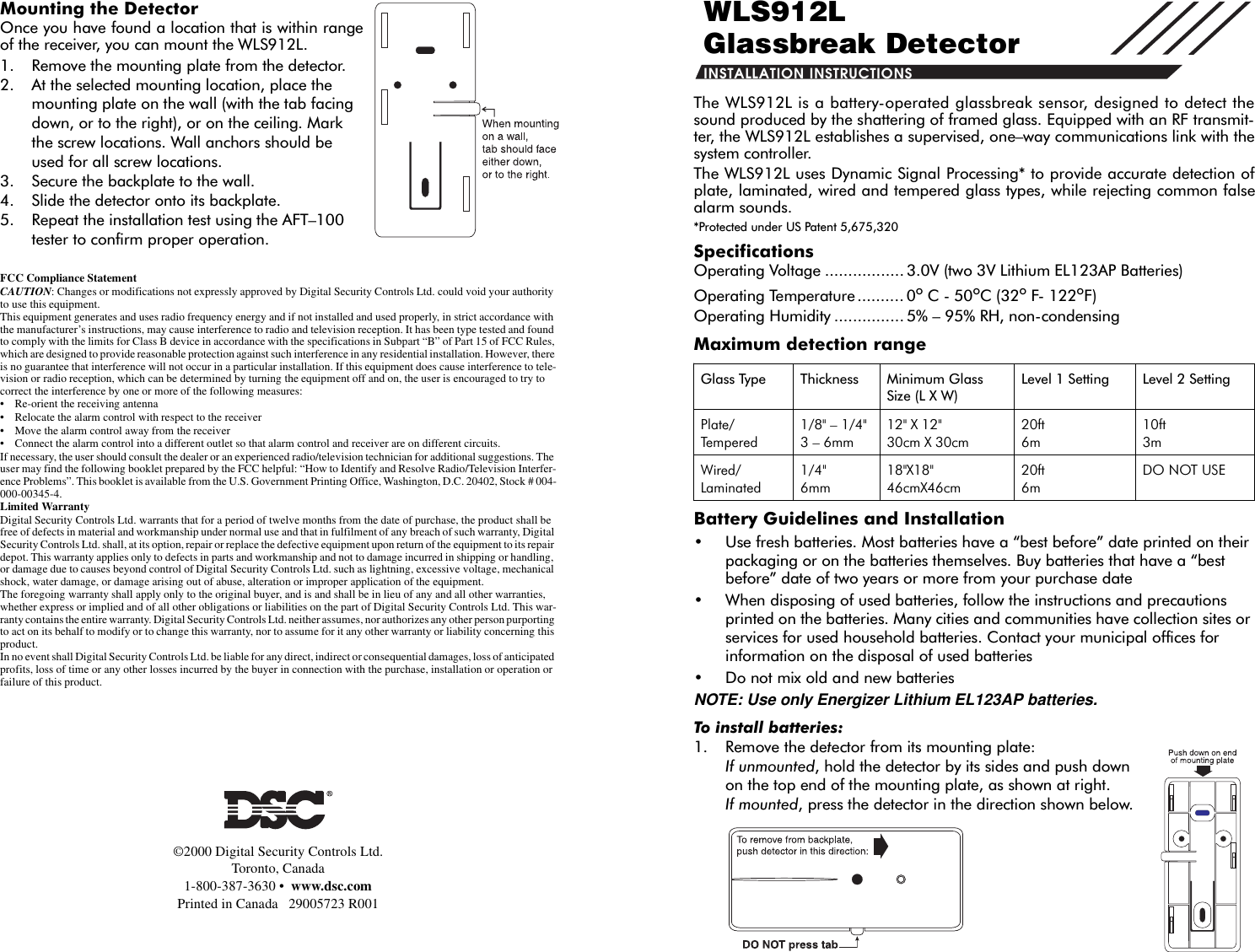Tyco Safety Canada 00NB912 WLS912-433, PWLS912-433, WLS912L-433 & PWLS912L-43 User Manual Installation guide
Digital Security Controls Ltd. WLS912-433, PWLS912-433, WLS912L-433 & PWLS912L-43 Installation guide
Contents
- 1. Users manual
- 2. Installation guide
Installation guide



